Vital Signs Monitoring Using mmWave Technology
This article discusses how vital signs such as breath rate (BR) and heart rate (HR) can be monitored using mmWave Technology based RADAR.
Vital signs are a set of medical parameters that indicate the status of health and body functions of a person. They give clues to possible diseases and trends of recovery or deterioration. There are four primary vital signs, viz., body temperature (BT), blood pressure (BP), breath rate (BR) and heart rate (HR). Vital signs vary from person to person based on age, gender, weight and fitness level. These signs may also vary based on the physical or mental engagements of a person in a given situation. For instance, someone engaged in physical activity can show high body temperature, breath rate and heart rate.
What is mmWave Technology?
mmWave Technology (Millimeter wave radars) transmit shortwave electromagnetic waves and any objects in the path reflect the signals back. By capturing and processing the reflected signals, a radar system can determine the range, velocity and angle of the objects. The potential of mmWave RADAR Technology to provide millimeter level precision in object range detection makes it an ideal technology for sensing human bio-signals. In addition, mmWave brings in the advantage of contactless, continuous surveillance of a patient, making it more convenient for the person and the user.
In this article, we discuss how vital signs such as breath rate (BR) and heart rate (HR) can be monitored using mmWave Technology.
What do BR and HR Vital Signs indicate?
Vitals of a healthy person are as given in the table below (1). These values, as mentioned earlier, may vary according to age, gender, fitness level and physical or mental activity at the time of measurement.
 Table 1: Vitals of a Healthy Person
Table 1: Vitals of a Healthy Person
A combined analysis of these parameters (HR and BR) helps a health care professional to assess the health & stress levels of a person under observation. The table below shows the resting heart rate of various age group.
 Table 2: Age-wise Resting Heart Rate
Table 2: Age-wise Resting Heart Rate
(Source: https://en.wikipedia.org/wiki/Heart_rate#Resting_heart_rate)
Figure 1 shows variation in HR based on the physical or mental engagement of a person.
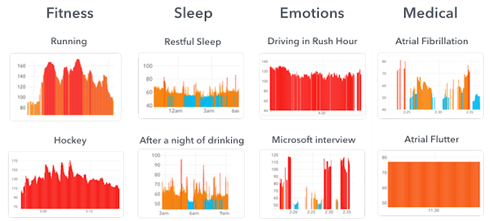 Figure 1: Variation of Heart Rate based on individual’s fitness, stress and medical states
Figure 1: Variation of Heart Rate based on individual’s fitness, stress and medical states
(Source: https://www.aaai.org/ocs/index.php/AAAI/AAAI18/paper/view/16967/15916)
HR and BR enable quick diagnosis of certain medical conditions that are fatal; for example, obstructive sleep apnea syndrome (OSAS) and sudden infant death syndrome (SIDS). Refer figure 2 to understand the breath pattern in various health conditions.
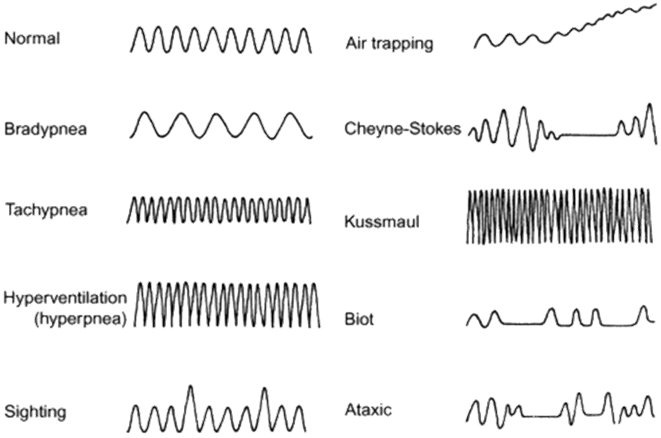 Figure 2: Breath Pattern
Figure 2: Breath Pattern
(Source: https://clinicalgate.com/chest-inspection-palpation-and-percussion/)
Studies indicate that individuals with high resting heart rate are at higher risk of heart related problems. And individuals with low resting heart rate may have the need for a permanent pacemaker implantation in future. Monitoring breath rate and heart rate of patients with above conditions could potentially save lives.
Contact and contactless based measurement of vital signs
Most of the existing vital signs monitoring devices are contact based instruments. They need to be attached to the patient’s body to measure and monitor various vital signs. This is not always convenient for healthcare professionals and patients who need to be monitored continuously over a period. For instance, during this Covid-19 pandemic situation, contactless vital signs monitoring devices may be more relevant as they help minimize direct contact with the infected patients, thus reducing the spread of virus through touchpoints.
mmWave Technology
As the name suggests, mmWave Technology make use of Radio waves with wavelengths from 10mm to 1mm and frequency of 30 to 300Gz. The spectrum allocated for mmWave Technology in industrial and automotive applications is 60 to 64GHz and 76 to 81GHz respectively. The short wavelength of signals in these RF spectrum drastically reduces the antenna size, enabling design ultra-compact Radars. Compact Radars, with the advanced antenna technologies such as Antenna on Package (AoP) and Antenna on PCB (AoPCB), aided its widespread use in car navigation, industrial automation, health care and several consumer applications.
In this article we focus on frequency modulated continuous wave (FMCW). FMCW Radars continuously transmit a frequency-modulated signal to measure the range as well as angle and velocity of a target object. An FMCW Radar differs from traditional pulsed-radar systems, which transmit short pulses periodically. In case of FMCW Radars, the frequency of signals increases linearly with time. This type of signal is called a chirp (Figure 3).
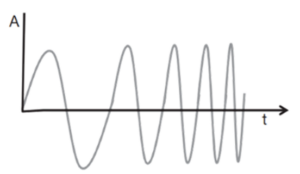 Figure 3: Chirp in time domain
Figure 3: Chirp in time domain
An FMCW Radar system transmits a chirp signal and captures the signals reflected by objects in its path. Figure 4 represents a simplified block diagram of the main components of an FMCW radar.
 Figure 4: FMCW Radar Block diagram (Source: TI.com)
Figure 4: FMCW Radar Block diagram (Source: TI.com)
A “mixer” combines the Rx and Tx signals to produce an intermediate frequency (IF) signal. The mixer output has both signals that are sum and difference in the frequencies of the Rx and Tx chirps. A low pass filter is used to allow only the signal with difference in frequencies to pass through. Figure 5 shows the transmitted and received chirps in frequency domain. If there are multiple objects at different ranges, there will be multiple reflected chirps, each with a delay based on the time taken to travel back to the Radar. For each reflected chirp there will a corresponding IF tone.
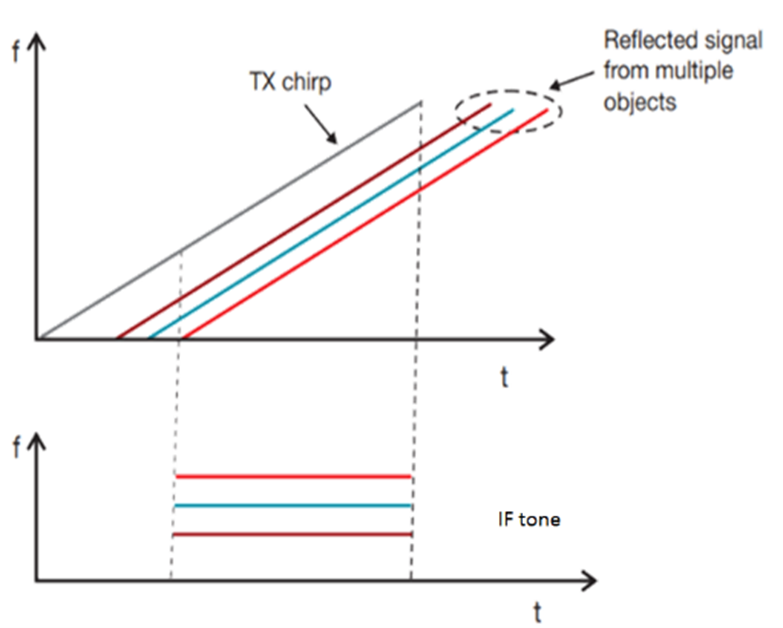 Figure 5: Frequency domain representation of TX and Rx Chirps and the IF frequency tones (Source: TI.com)
Figure 5: Frequency domain representation of TX and Rx Chirps and the IF frequency tones (Source: TI.com)
On analyzing the frequency spectrum of the IF signal, each peak in the spectrum corresponds to one or more detected object and the frequency corresponds to the object’s range. If the object moves towards or away from the radar, due to doppler effect, the frequency and phase of the reflected chirp changes. Since the wavelength is in the order of 3.5 mm, a small change results in large phase change. It is easy to detect large change in phase compared to a small change in frequency. Thus, in FMCW mmWave radars, phase information is used to detect velocity of the object. To determine objects velocity, multiple chirps are used. The difference in phase between successive reflected chirps are recorded and the velocity is calculated with it.
How mmWave Radar Technology detects vital signs?
An advantage of short wavelength is the high accuracy. An mmWave Radar operating at 60 or 77GHz (with a corresponding wavelength in the range of 4 mm), will have the ability to detect movements that are as short as a fraction of a millimeter. In Figure 6 we show an mmWave RADAR transmitting chirps towards the patient’s chest region. The reflected signal is phase modulated due to the movement of the chest. The modulation has all components of movement including the movements due to heartbeat and breathing.
The Radar transmits multiple chirps at a predefined interval to compute the change in phase and thus velocity. A spectral analysis of this velocity helps to resolve various components, which is achieved by doing doppler FFT.
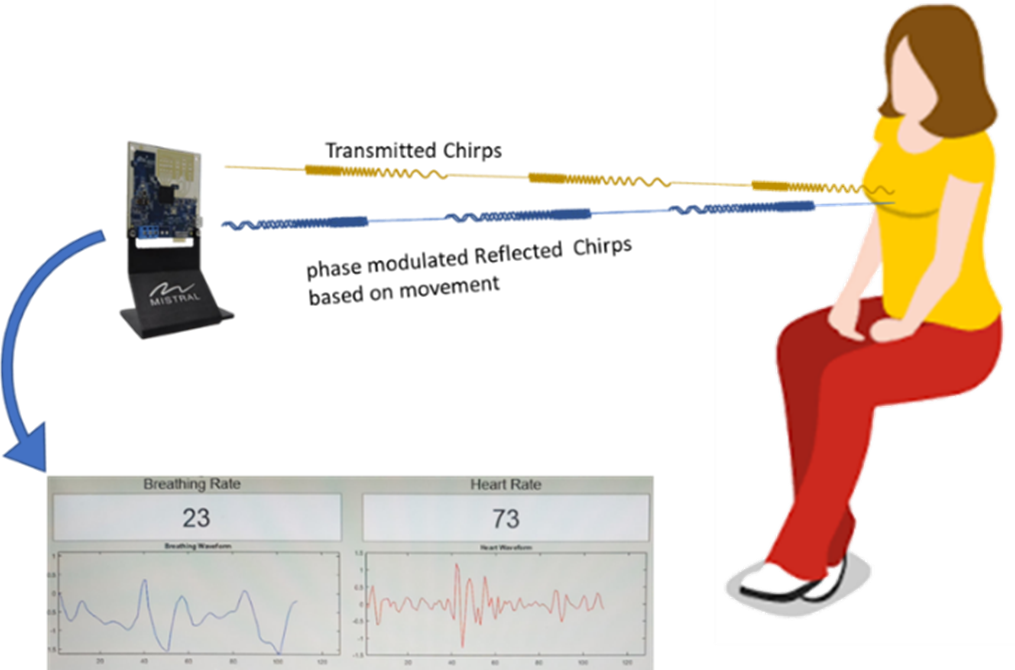 Figure 6: HR and BR detection setup
Figure 6: HR and BR detection setup
Figure 7 shows the HR and BR detection algorithm. An adult’s heartbeat frequency is between 0.8 and 2Hz, while the frequency of breath is in the range of 0.1 to 0.5Hz. From the doppler FFT, the velocity components at frequencies of heartbeat and breath rate are selected and plotted against time. The number of peaks in one minute for each of these frequencies provide the heart rate and breath rate of the person.
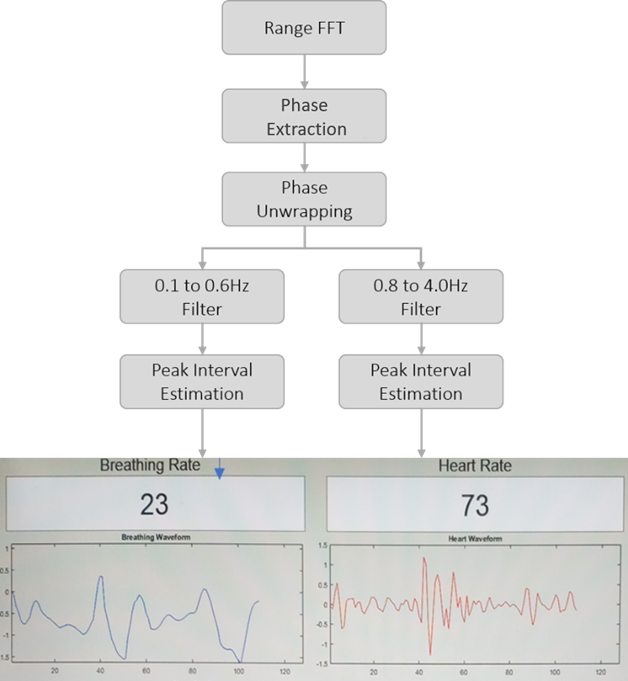 Figure 7: HR and BR detection Algorithm
Figure 7: HR and BR detection Algorithm
Challenges in mmWave based vital signs monitoring
Vital signs monitoring using mmWave RADAR is still under development. One of the major challenges is the variation of reflected signals across people. The reflection depends on the skin type, tissue, and its composition. The water content level and various chemical composition in the body also matters. The ongoing studies on the variation of reflected signals is expected to yield results and achieve more accurate measurements by the Radars.
Conclusion
The major focus of mmWave Technology have been centered around Defense, Automotive and Industrial applications. However, the recent advancements in the mmWave Technology are finding great significance in healthcare applications. The high accuracy, high-speed signal processing, enhanced range detection and the confinement of Radar into an ultra-compact Chipset are expected to greatly enable healthcare applications such as patient activity monitoring, vital signs monitoring, etc. To know about Mistral’s mmWave Radars, visit our mmWave Technology Page. To know more about Mistral’s antenna design services, RF design services, and Product Design capabilities, submit a query here. This blog is extracted from the Article published on Embedded.com, by Srinivasan Subramani, Senior Technical Architect – Software Design, Mistral Solutions.




